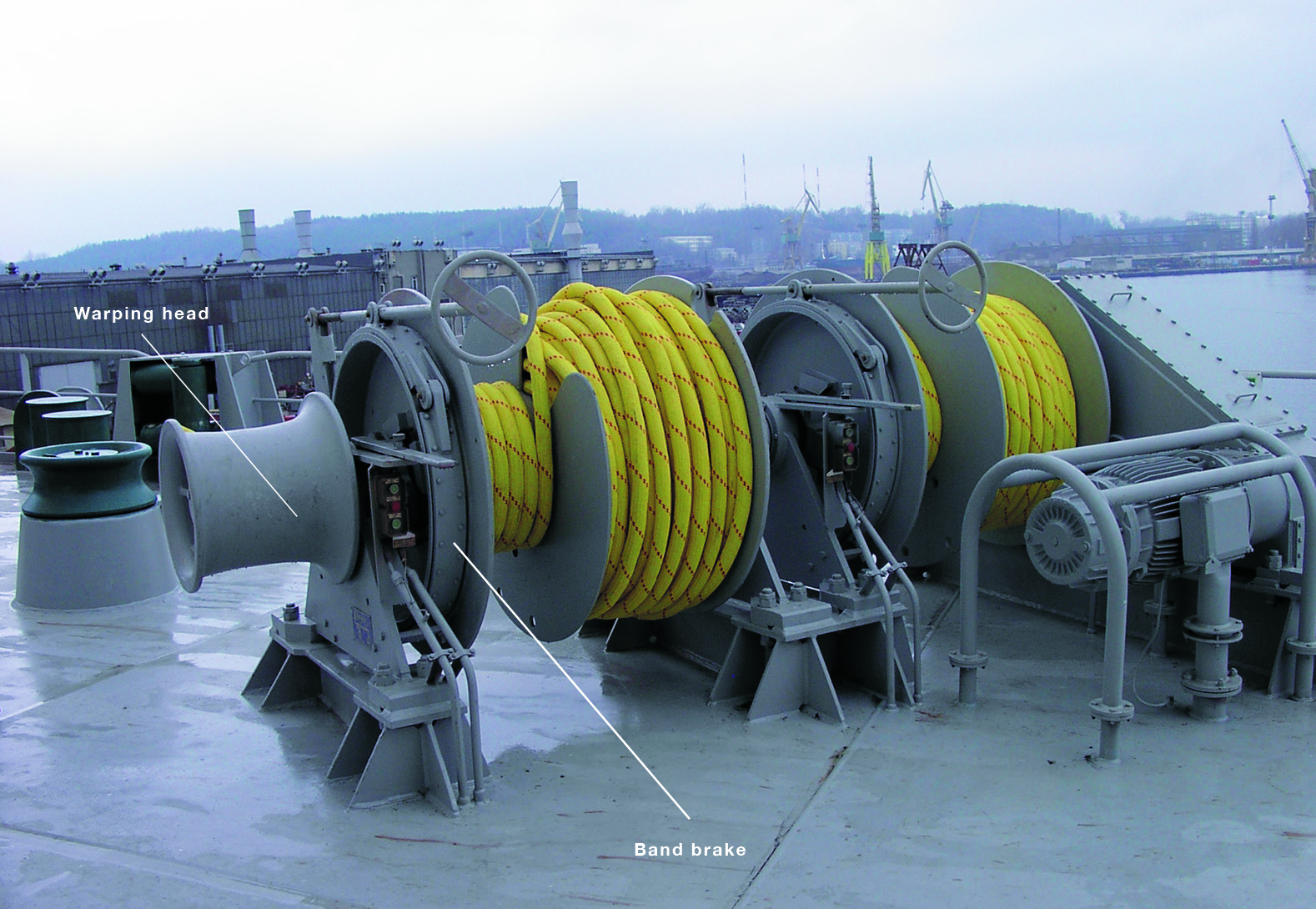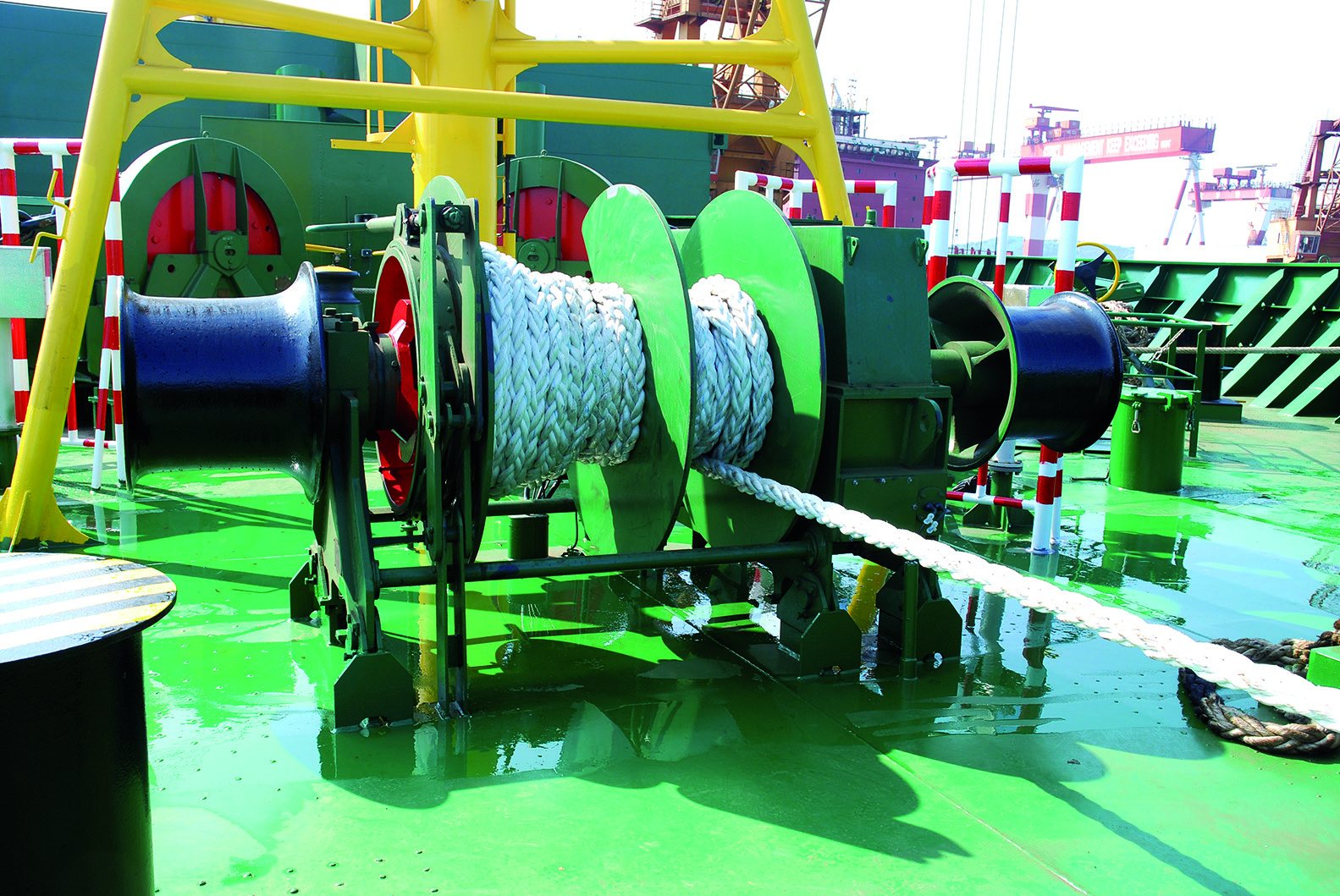

Mooring winches
Mooring winches secure the shipboard end of mooring lines, provide for adjustment of the mooring line length and compensate for changes in draft and tide. General requirements for shipboard mooring winches are dealt within ISO Standards 3730 and 7825.
Winches can be categorised by their control type (automatic or manual tensioning), drive type (steam, hydraulic or electric), by the number of drums associated with each drive, by the type of drums (split, undivided) and by their brake type and brake application (band, disc, mechanical screw, spring applied).
- Automatic tension mooring winch, self-tension winch – Winches designed to heave-in automatically whenever the line tension falls below a certain pre-set value. Likewise, they pay out if the line tension exceeds a pre-set value. The use of the self-tension winches is not recommended except for mooring deployed at 90° to the ship axis.
- Manual tension mooring winch – Manual winch always requires a person to handle the controls for heaving or rendering.
- Non-split drum mooring winch – The undivided drum winches are commonly found on smaller ships. It is often difficult to spool and stow the wire on such a drum satisfactorily; when wires are handled directly off the drum, the final turns of the outer layer when under tension tend to bite into the lower layer. This could result in possible wire damage and difficulties when releasing the line. To reduce this problem, the winch with non-split drum should be placed at a sufficient distance from the fairlead to ensure that the wire can be properly spooled.
- Split drum mooring winch – A winch with a drum divided by a notched flange into a tension section and a line storage section.

